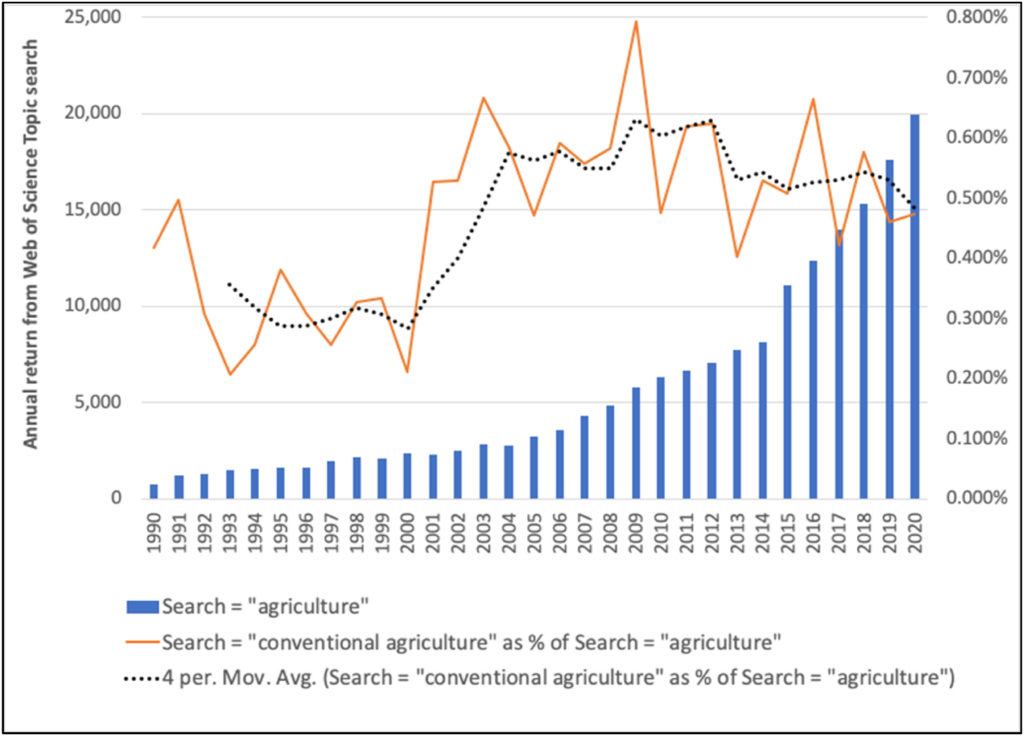What is "conventional agriculture"?

What does “conventional agriculture” mean? Does it even make sense to use this undefined term in the debate about the future of agriculture when discussing production approaches and sustainability? Following an article recently published on Science Direct, we thought we’d look at the meaning of this term widely used to describe the immense diversity within agriculture.
Usually, the adjective “conventional” is used to refer to “traditional” agricultural and breeding practices, in contrast with the “alternative” ones. These differences arise from the fact that agriculture faces critically important challenges. So the scientific community and society try to find different ways to classify farming systems. This often involves using simplistic terms to attract the public’s attention.
Academic literature tries to classify, categorise, and name the diversity of agriculture types, systems, and forms. For example, different agricultures are ranked based on their land-use intensity, diverse cropping systems, or the use of a practice, like tillage. The Oxford English Dictionary and the Merriam-Webster Dictionary suggest that the word “conventional” can have different meanings: “A general agreement or understanding about how farming can or should be done; ordinary or commonplace agriculture; agriculture that falls outside a circumscribed category”.
For example, if used at a farm systems level, “conventional agriculture” might refer to farms that have not met the standards for organic certification. The adjective ‘conventional’ has been associated with the noun ‘agriculture’ since the 20th century. The frequency of the term began to increase significantly in the 1960s when the environmental movement started to spread in the USA (Figure n.1).

After 2000, “conventional agriculture” was increasingly used in scientific journals’ articles (Figure n.2). Recently published papers tend to extoll the virtues of “regenerative agriculture” by comparing it with the “conventional” one, often highlighting conventional agriculture’s characteristics and negative aspects.

Given the considerable variation of essential characteristics such as farms’ size and interactions, it makes no sense to continue limiting the “conventional” to a few considerations, such as using inputs.
This way of expression can be wrong and intellectually dishonest both to agriculture and zootechnics, and it cannot help the cause of greater sustainability. This is because of the high degree of agroecological diversity and the variety in the historical, sociocultural, technological, economic and policy contexts surrounded by all livestock and agriculture. Alternative practices promoting biological diversity paradoxically deny the immense diversity characterising livestock and agriculture. This hinders more sustainable agriculture, greater food security and improved soil health.
For example, conventional livestock farming is usually judged negatively compared to alternative forms, such as “extensive” or “outdoor” farms. Traditional farms are more sustainable, thanks to technological innovations. These types of farms today have significantly changed compared to the past. The breeding occurs in confined environments, such as closed or open stables, which allow greater animal health control. Thanks to technology, everything is under control in a precise and automated way. For example, there is the possibility of feeding with precision every single animal according to its actual needs, reducing waste. This improves efficiency, animal welfare and sustainability.
Even if organic farming practices, such as outdoor breeding and grazing, create the impression of minor exploitation and greater animal welfare, this is not always true. It is impossible to establish that animals outdoors, which certainly have more space available, are better than those reared in confined stables. The advantage of the more significant space contrasts with other disadvantages related to less control over the animal. For instance, there is a reduced possibility of a cure from diseases and parasites, high exposure to bad weather and predators and the possible inadequate availability of food and water in quantitative and qualitative terms.
Both breeding methods have pros and cons, and it is not correct to say that one is wrong and the other right. There is a middle way between the two, a compromise to be reached, applying the knowledge and the results of scientific research. European animal husbandry is investing in “precision farming“, that is, the attention to animals’ real needs in a particular way. This is the right way to sustainability, producing more with less input regarding animal welfare.
For this reason, misleading adjectives should have no place in either public debate on the future of agriculture or the scientific literature. Framing the research and the policy around the relative superiority of any “alternative agriculture”, such as organic production, perpetuates a mentality rather than consideration of where and how each type of management system can contribute to more sustainable agriculture.